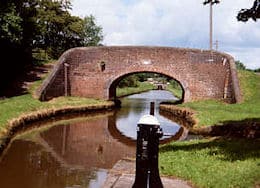A horse pulling a barge is a very efficient form of transport.
At a steady walking speed a horse can move approximately fifty times as much weight in a boat as it could with a cart on old fashioned roads, possibly a hundred times its own body weight. The load moves with minimal friction whilst the strength of the animal is linked directly to the load with little wasted energy and it was this efficiency equation that inspired the development of the canal system in the eighteenth century. It was also this same old-fashioned horsepower that kept it going profitably for a century and a half.
Even after the widespread introduction of steam and motor boats horse-drawn craft continued to operate and compete with them until the middle of the twentieth century. Horses are a critically important part of canal history, but a part that is in danger of being overlooked in this mechanical age. It wasn’t so much the steam engine that created the industrial revolution as the horse that brought the coal to the boiler in the first place.
Boats are only transport when they move. The cheapest way of moving is to drift, using the current, but on inland rivers this is obviously a one way traffic, downstream. On tidal rivers like the Thames the flow can be used each way, ebb and flood, but in general the boatman needs some extra power to get very far upriver. Sails are fine if the wind is in the right direction (and the river’s straight) but British weather is always a gamble. The captain is faced with a choice. He can wait for days for a fair wind, and get paid eventually, or he can hire a gang of men or a man and a horse to drag his barge upriver and get paid for delivery tomorrow. This was the regular dilemma that faced inland waterway transport before the eighteenth century – it was constantly subject to delays from too much wind, or too little, or from floods or drought. It was better than pack horses or road transport, but not much.
The canal age was very different. The channel was new and artificial and the water was still, without current either way. Bridges were low and numerous but each was provided with a towing path under it for the horses and mules that pulled the new long thin canal boats, reliably and regularly, sometimes even to a strict advertised timetable.
This was a huge improvement on both road and river traffic and canals reigned supreme and profitably for half a century until the railways came to challenge them. Then they had to tighten their belts somewhat and concentrate to compete, but the old equation still held true – a horse and barge remained an efficient way to move bulk cargo.
Horse drawn narrow boats in the Midlands lasted into the 1950s whilst horses pulling big barges, with their bigger payloads, were still at work on the Regents Canal in London until the 1960s. Two hundred years is surely not a bad history for one virtually unaltered form of transport?
Horseboating, for all its apparent slow romantic grace, was not for the fainthearted. It was very hard work requiring skilled judgement and experience interspersed with long hours of plodding drudgery and most of the boating population were pleased to move on to motor boats as they became available. Engines didn’t get tired, and you didn’t have to walk behind them all day, every day…
All materials and images © Canal Junction Ltd. Dalton House, 35 Chester St, Wrexham LL13 8AH. No unauthorised reproduction.
About | Terms | Privacy| Refunds & Returns| Sitemap | Contact Us
With over 800 pages, this website uses cookies to record visitor behaviour using Google Analytics. More information on Privacy Page. Page last updated: 30/03/2025.



Back to Menu....
Narrowboats & Barges >>
Canal Heritage >>